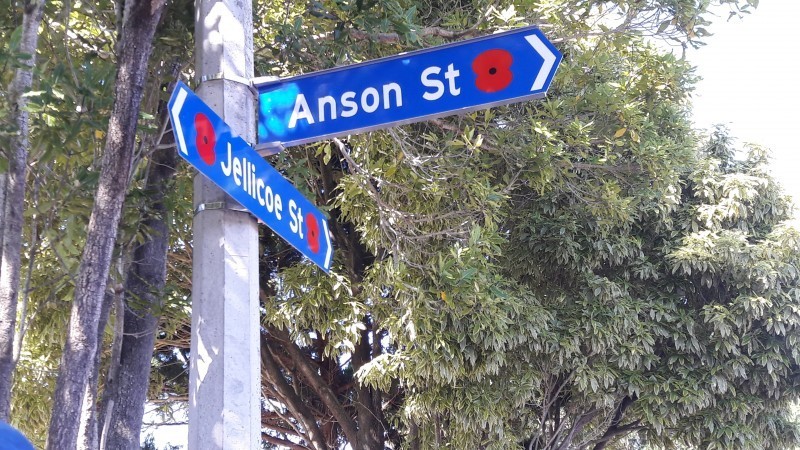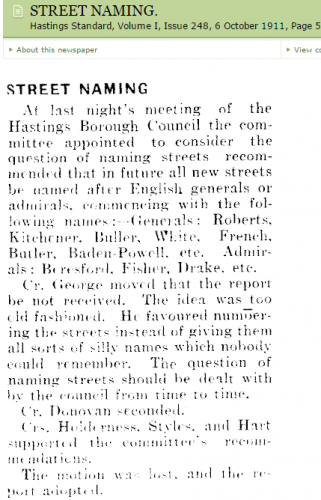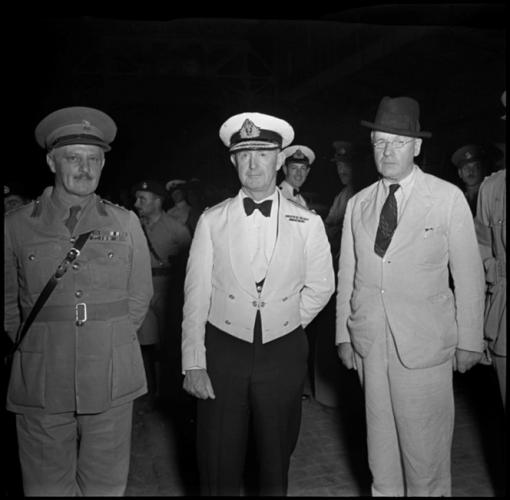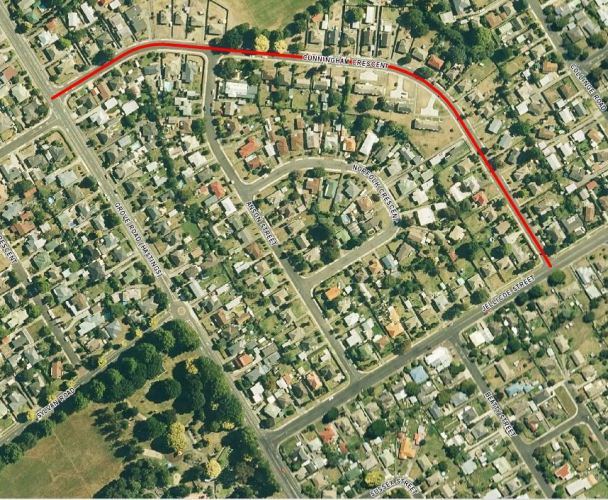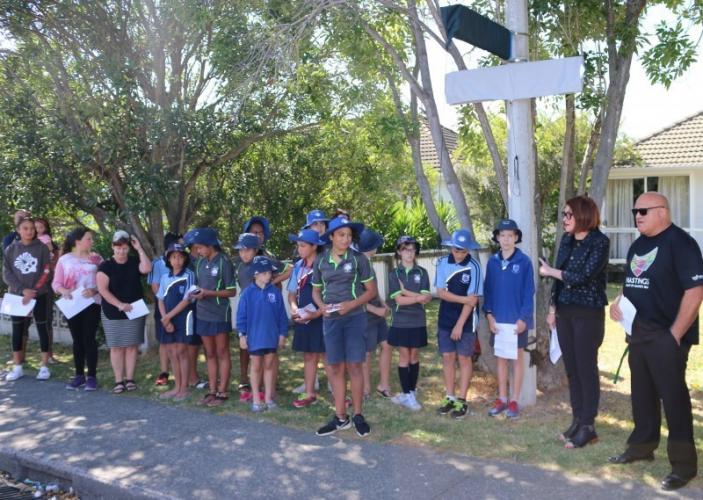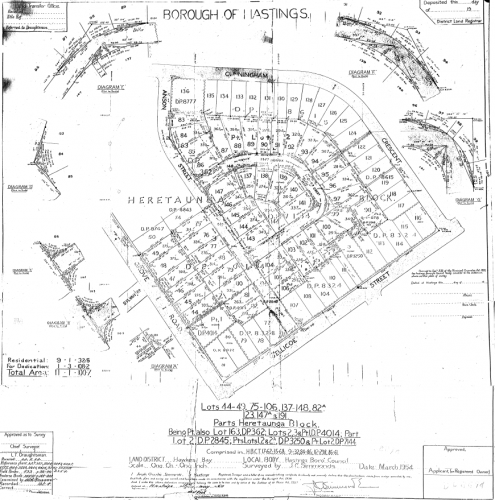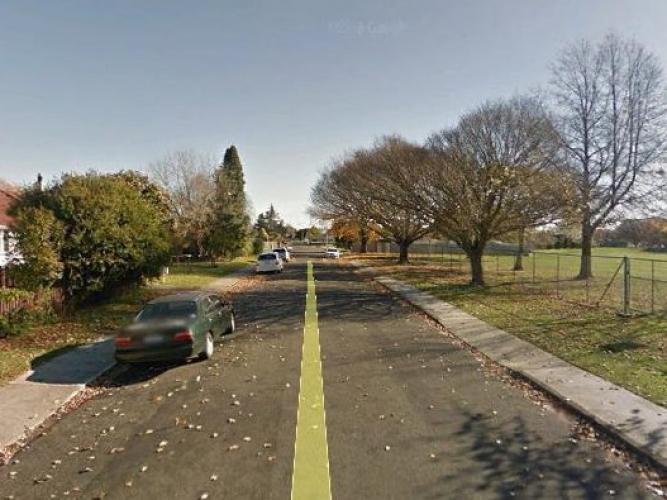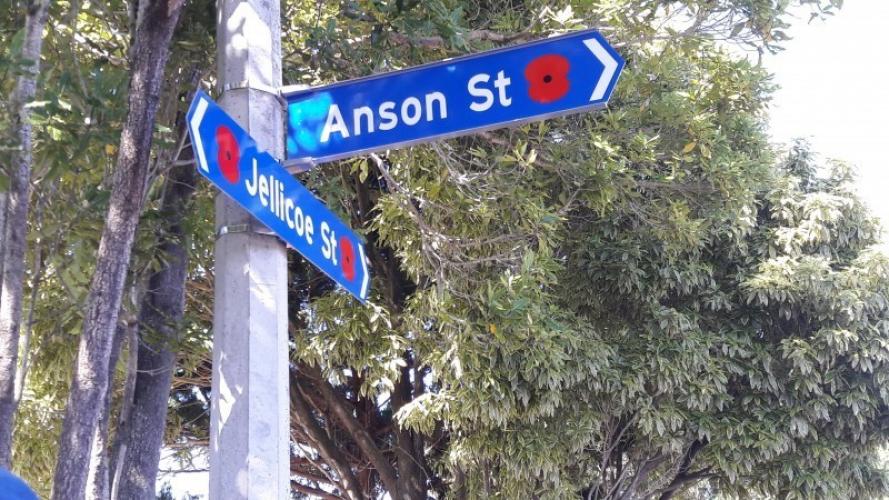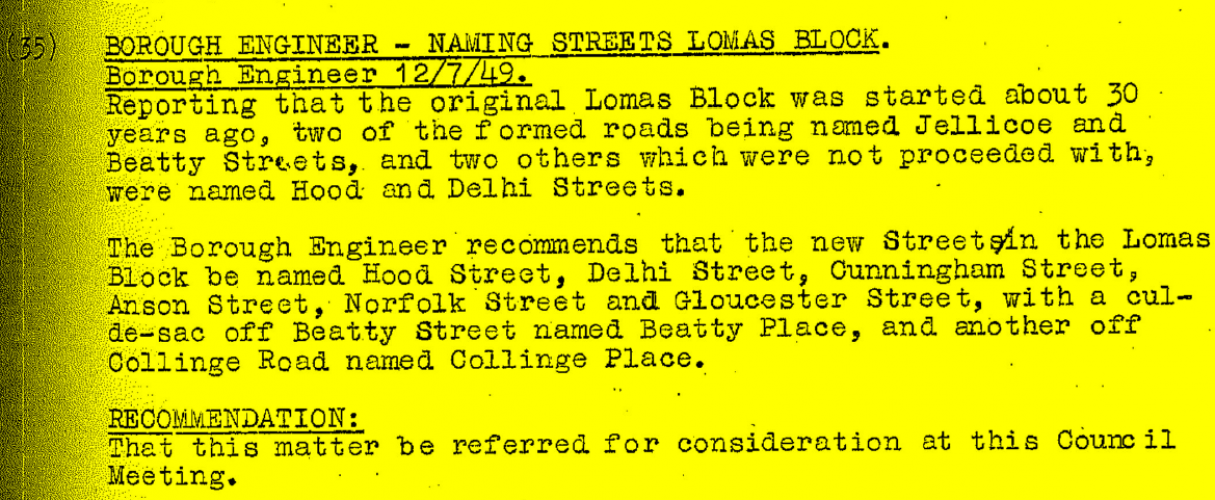057 Cunningham Cres Hastings, street view 2017
Reason for the name
This street was named after Admiral Andrew Cunningham (he served in the Boer War, WWI and WWII, during which he became first Commander in Chief of the Mediterranean Fleet and later Admiral of the Fleet then First Sea Lord of the Admiralty and Chief of the Naval Staff).
Cunningham Crescent is part of what was once called the Lomas subdivision in the Mayfair suburb of Hastings, near Windsor Park and local attraction Splash Planet.
The streets in this area were all named for naval reasons, after Admirals or battleships (Jellicoe, Beatty, Hood, Cunningham, Sussex, Norfolk and Anson).
Council records show the naming of Hood Street (confirming a 1916 decision which also named Jellicoe and Beatty Streets), Cunningham Crescent, Anson Street, Norfolk Street and Sussex Street were decided in 1949, with the subdivision happening from 1951.
Hastings Borough Council had a policy in the early 1900s of naming new streets after English generals or admirals.
About 7000 New Zealand officers and ratings served with the Royal Navy for varying periods during the Second World War. The peak was reached in September 1944 when the total strength of the Royal New Zealand Navy was 10,635, of whom 1242 officers and 3659 ratings, a total of 4901, were serving overseas in ships and establishments of the Royal Navy. New Zealanders saw active service in ships of every type from battleships and aircraft-carriers to submarines, motor-launches, and landing craft and in every sea from Spitzbergen in the Arctic to Cape Horn and from Iceland to the shores of Japan. They took part in every major naval engagement or operation and in countless minor actions, as well as in the ceaseless patrols and sea drudgery that make up so great a part of naval warfare...
It was thus appropriate that several new streets being developed just after WWI, and added to after WWII, were named after important naval leaders and ships. The names for Jellicoe Street, Beatty Street and Hood Street had already been decided in 1916, although Hood Street wasn’t developed until later.
Authors: Cherie Flintoff and Helen Gelletly (HDC) Madelon van Zijll de Jong and Katrina Barrett (private researchers, formerly at Hastings District Libraries).
Suda Bay on Crete was used as a base for the Navy and also as a staging post for many of the anticipated 58,000 troops to be repatriated to Egypt. By 3 May, when the evacuation of Greece was concluded, about 50,600 men had been taken off, much of the time under severe air attacks. Following the withdrawal from Greece the situation on Crete was: the Navy had a base at Suda Bay; air cover was provided by one squadron of the Fleet Air Arm and there was an Army garrison of about 30,000 men, under a New Zealander, Lieutenant General Freyberg. The Army was lacking much equipment, including guns, that had been left behind in Greece and no Air Force support was available from the 35 serviceable Hurricane fighters in the Middle East Theatre.
At 0800 on 20 May, the anticipated attack on Crete by the Germans began with a bombing attack, followed by the first large scale airborne invasion in history, by paratroops and gliders. Supplementing the airborne troops were two seaborne invasion forces. The main role of the Navy was to intercept and destroy these seaborne forces.
Admiral Cunningham had two battleships, eight cruisers, and seventeen destroyers at sea that morning, in the vicinity of Crete, with an additional cruiser about to sail from Alexandria.
All task groups suffered hours of air attacks during the daylight hours of 21 May, fortunately, only one ship was sunk, the destroyer Juno, which was hit by three bombs during a series of air attacks that lasted four hours.
Although the fleet was subjected to numerous air attacks on the 21st, it was from only one group of aircraft, the bulk of the German air effort being directed to support the troops ashore. However, the next day the whole weight of the German air forces were thrown against the Royal Navy.
The German air effort was virtually continuous. Aircraft returning from missions were immediately refuelled, rearmed and sortied again to attack the ships. The cost to the Navy this day was two cruisers and one destroyer sunk and two battleships and two cruisers damaged. One of the New Zealanders serving in the fleet, Petty Officer Henry Booth was awarded the DSM for his conduct as action quartermaster in HMS Fiji when that ship was sunk. At 0400 the next morning Admiral Cunningham recalled all ships to Alexandria.
Before they could get to the safety of that port, another day of air attacks had to be endured. Two destroyers were sunk and another two damaged on 23 May, one of which was HMS Kelly, which included New Zealanders amongst its ship’s company. Ordinary Seaman Urquhart was killed in this action and although his friend, John Raymond survived, he was lost when his next ship was sunk some months later.
For the troops based on land, the invasion of Crete was calamitous. At dawn on 31 May there were still some 9000 men in and around Sfakia waiting to be evacuated. Time was fast running out. General Wavell, conscious of mounting naval and troop losses, decided that the evacuation that night would be the last. Four destroyers were initially allocated to this operation.
When the New Zealand Prime Minister Peter Fraser, who was in Egypt, learned that 31 May was to be the final night of the evacuation, he urged Admiral Sir Andrew Cunningham, Commander-in-Chief of the Mediterranean Fleet, to send an additional ship. The loss of men on Crete would be a crushing blow to New Zealand’s war effort, Fraser argued. Cunningham’s response was to order that the cruiser HMS Phoebe return to Crete.
In appreciation of the huge effort made by the Royal Navy during the evacuations from Greece and Crete, the New Zealand Division held a collection once it returned to Egypt. The £820 raised (equivalent to around NZ$69,000 in 2011) was presented to Admiral Sir Andrew Cunningham during a ceremony in 1941.

